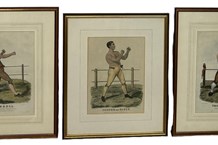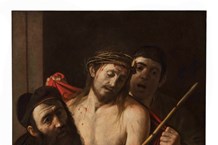The silver gilt box was unmarked, probably 20th century and estimated at £200-300. The gold and enamel box, bottom right, was obviously 18th century in style, but carried 19th century marks, and was thus expected to make £800-1200.
Accordingly, the first two boxes sold for respective prices of £600 and £180. But the third one, brightly enamelled on cover, sides and base with flowers, leaves and exotic birds in shaped panels caused a sensation. The buzz of London trade interest suggested that the ‘19th century’ box might date from the previous century, and on closer inspection it appeared that the double eagle head of the post-1838 Paris assay office had been struck over an earlier mark. The maker’s mark and date mark to the interior of the box had not been identified by the auctioneer, and whether knowledge of either spurred on the trade and private bidders is not known.
However, the winning bid of £30,000 was clear evidence that the box dated from the first half of the 18th century, if not earlier.
The third box that hid a £30,000 secret...
On paper there was not much to separate these three French boxes at Dreweatt Neate’s sale on October 31-November 1. The engine turned gold snuffbox pictured above right was 19th century in date and expected to sell for £500-800.




